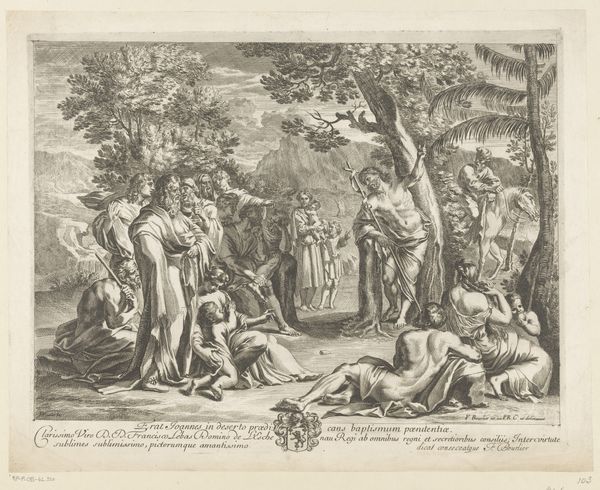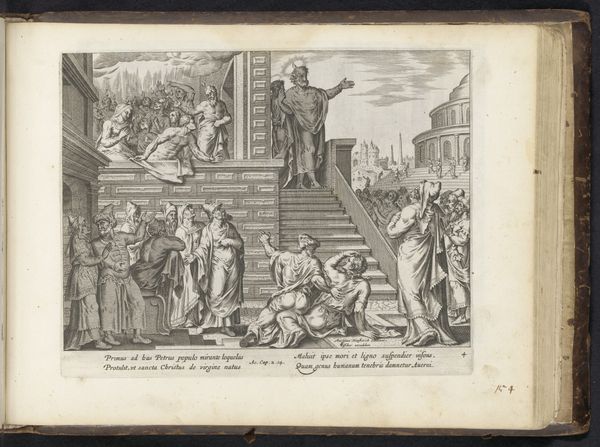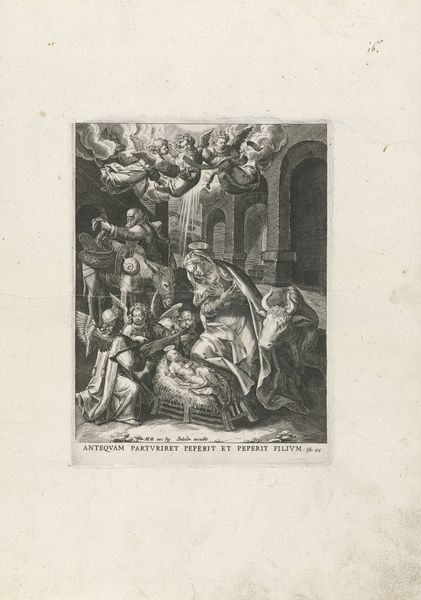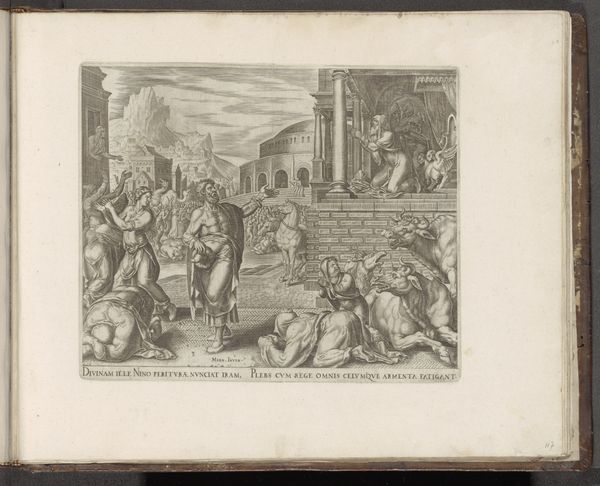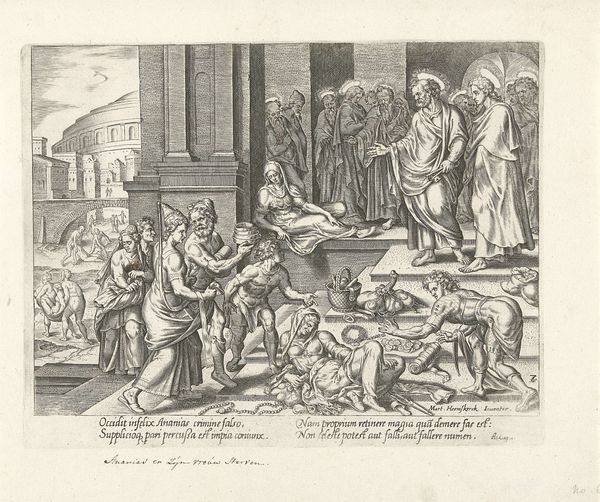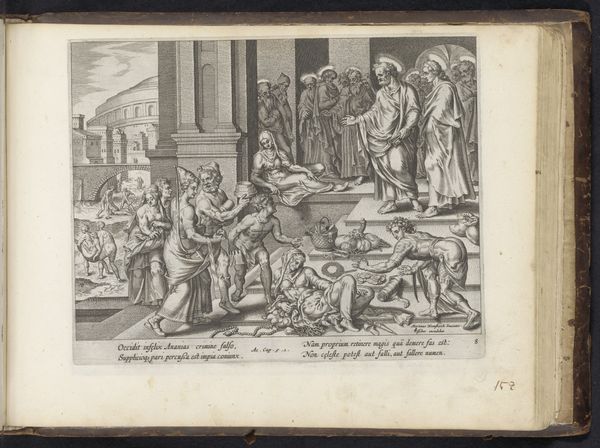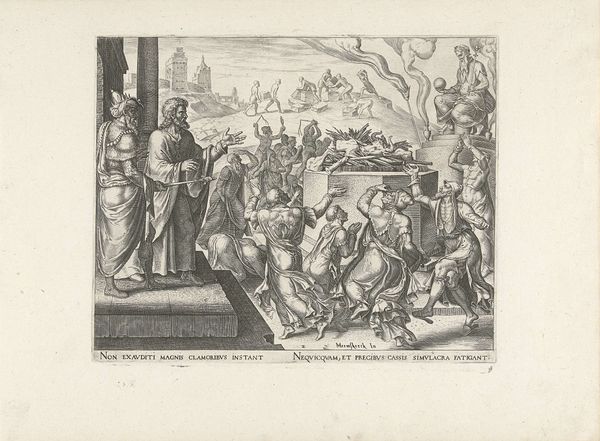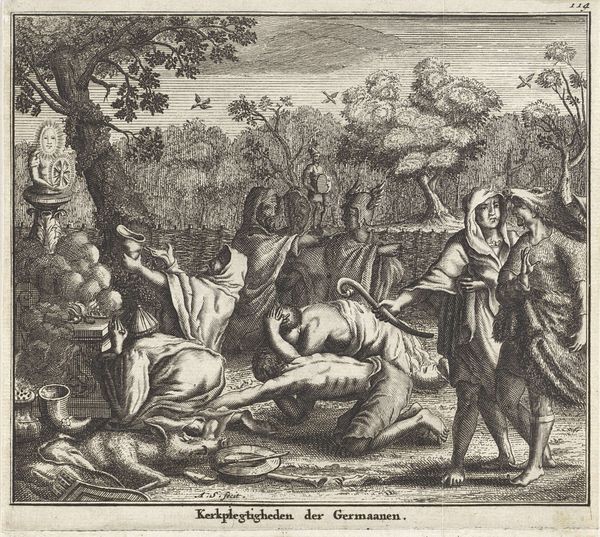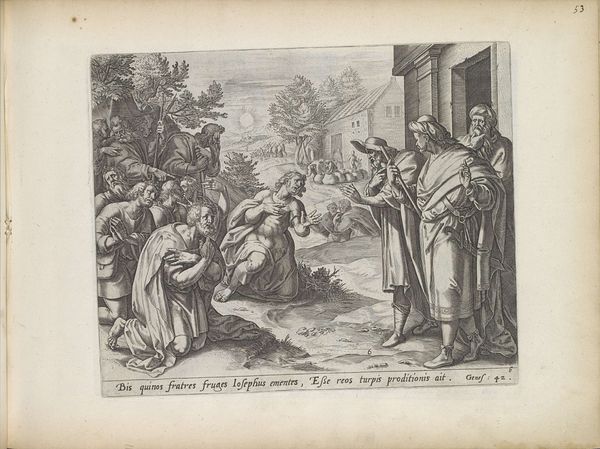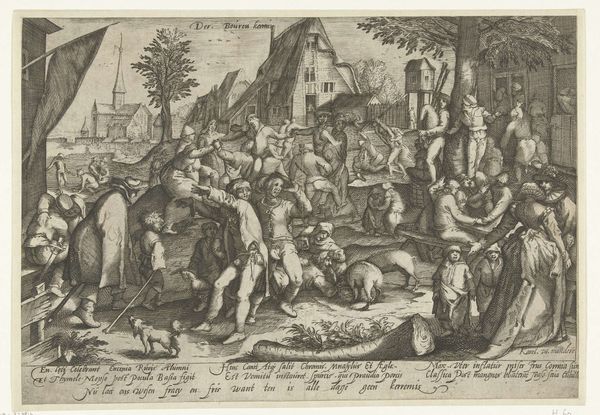
print, engraving
#
allegory
#
baroque
# print
#
old engraving style
#
history-painting
#
northern-renaissance
#
engraving
Dimensions: height 114 mm, width 165 mm
Copyright: Rijks Museum: Open Domain
Editor: Here we have "Kunst van het sterven" – "The Art of Dying" – a 1602 engraving by Wierix, currently housed in the Rijksmuseum. It's such a busy scene, almost overwhelming with its detail. I find it unsettling; all those figures seem to be preoccupied while death is happening right in front of them. What social commentaries can you extract from this work? Curator: Absolutely, the density of the image mirrors the complex relationship between life, death, and social rituals in the early 17th century. The figures are engaged in earthly pleasures while death – embodied by the skeleton – actively intrudes. The engraving critiques the obliviousness of privileged society. Note how the dining figures represent earthly delights, while others administer last rites. It embodies tension. Considering the historical context of the plague, how might contemporary audiences have viewed this juxtaposition? Editor: The plague would have made the scene incredibly relevant. Is it suggesting a certain fatalism, or is it a call to action? Curator: It is both, simultaneously. The angel reaching down and the praying figures illustrate faith and divine intervention; while others indulge without reflection. Think of the power structures at the time. This print questions individual morality, while also highlighting societal anxieties during religious and political turmoil. The "art of dying" then, becomes an active negotiation, rather than a passive event. How might you connect such representations of mortality to contemporary movements concerned with social justice and equity? Editor: That’s a fascinating point. Perhaps thinking about unequal access to healthcare, or how environmental issues disproportionately affect certain communities forces a similar reckoning with mortality today. Curator: Precisely. The image continues to spark essential dialogue about living with intention, about death and social responsibility across time. Editor: It is a stark, evocative reminder to engage more deeply with the present, in light of future mortality. Curator: And to question the structures that shape our experiences.
Comments
No comments
Be the first to comment and join the conversation on the ultimate creative platform.
